Afghanistan – Exploring the Rich Flavors through the Land of Spices
- Asia Food
Cruisit Team
- July 15, 2023
- 0
- 4902
- 15 minutes read
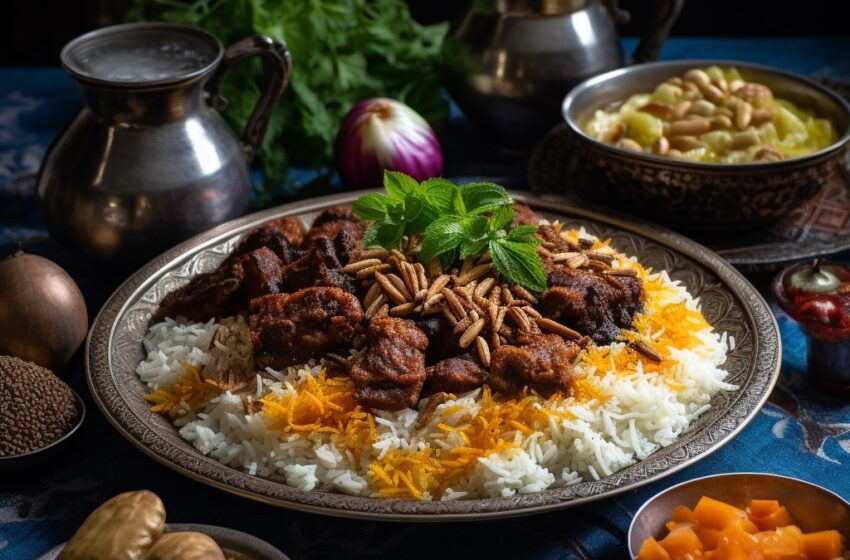
Afghanistan has a rich and diverse food culture influenced by various regional and historical factors. Afghan cuisine is characterized by the use of bold spices and flavors, fresh herbs, and a balance of meat and vegetables.
Afghan food is a perfect representation of the country’s cultural and geographical diversity, featuring an array of unique and flavorful dishes that are sure to tantalize your taste buds. In this article, I will provide a comprehensive overview of Afghanistan’s food culture, and I will present a list of the top 10 dishes that every food enthusiast must try.
Overview of Afghan Food Culture:
Afghanistan’s cuisine is a blend of diverse influences from Persia, India, and Central Asia. The country’s food culture is influenced by its rugged mountainous terrain, which makes agriculture and livestock farming the primary source of food. The cuisine is characterized by its rich flavors and aromatic spices such as cumin, cardamom, saffron, and coriander.
Traditionally, Afghan meals are shared and eaten communally, with the family gathered around a large platter or tray known as dastarkhan. Bread, rice, and meat are the staples of Afghan cuisine, with lamb being the most commonly consumed meat. Dairy products like yogurt, cheese, and cream are also an essential part of the cuisine.
Afghanistan's Top 10 Dishes are:
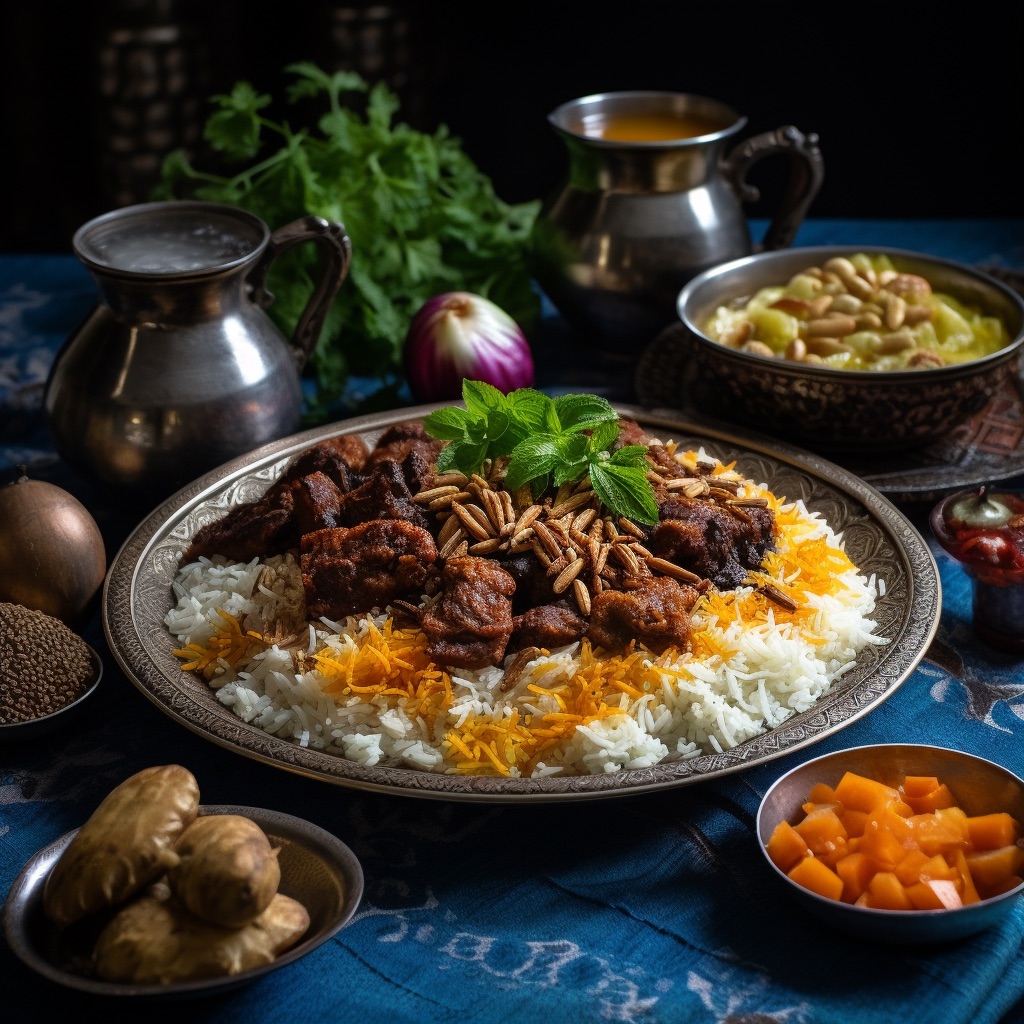
1- Kabuli Palaw:
Kabuli Palaw is Afghanistan’s national dish, and it is a combination of steamed basmati rice, lamb or beef, and a variety of vegetables. The dish is seasoned with a blend of spices and is often served with raisins and carrots. The blend of spices, including cinnamon, cardamom, and cumin. The sweetness of the raisins and carrots complements the savory flavors of the rice and meat. Qabili Palau is a dish that was originally created for the Afghan royal family during the time of the Mughal Empire. Kabuli Palaw is a staple of Afghan cuisine and is often served at weddings and other special occasions.
2- Mantu:
Mantu is a traditional Afghan dish that consists of steamed dumplings filled with spiced beef or lamb and onions. The dish is usually served with a tomato-based sauce and topped with yogurt and dried mint. Mantu is a traditional Afghan dish that is similar to Chinese dumplings. Mantu is believed to have originated in Central Asia and was introduced to Afghanistan by the Mongols. It has since become a popular dish in the country, especially during festivals and celebrations.
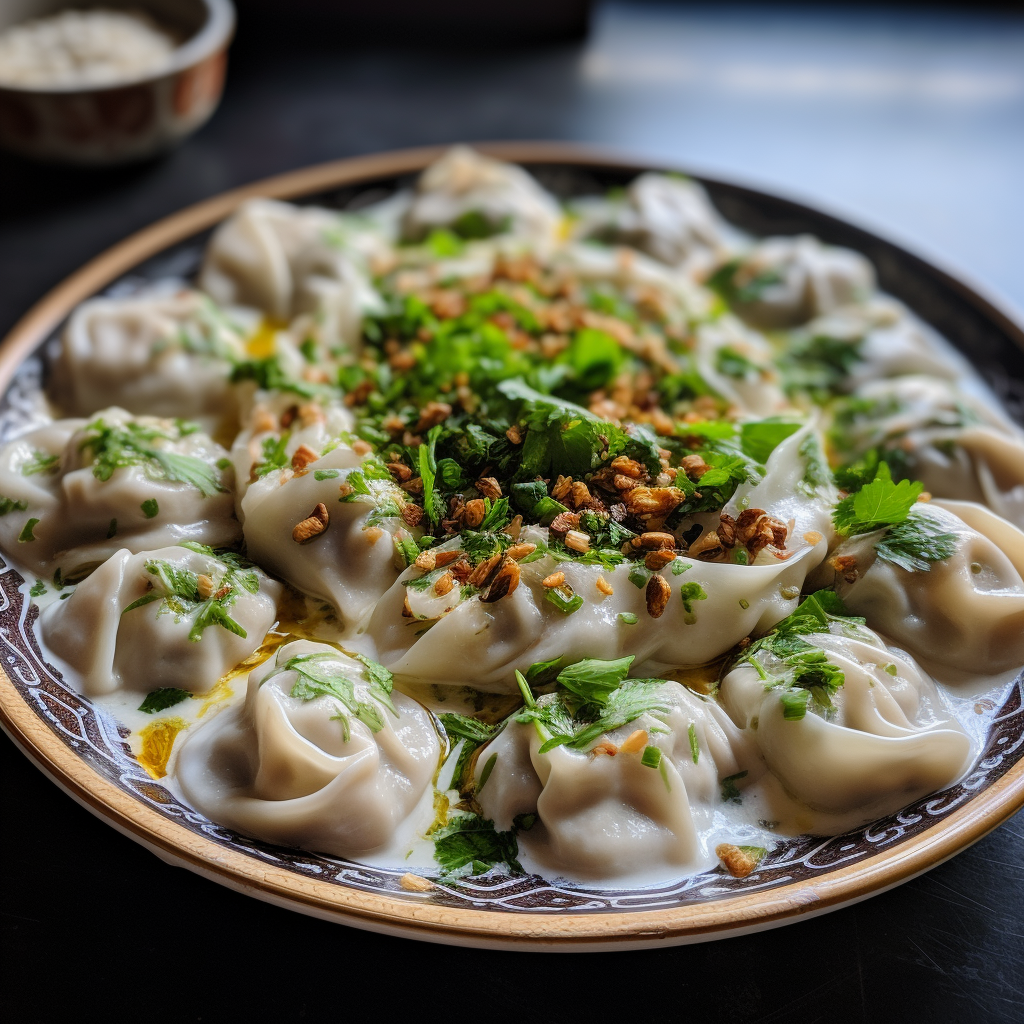
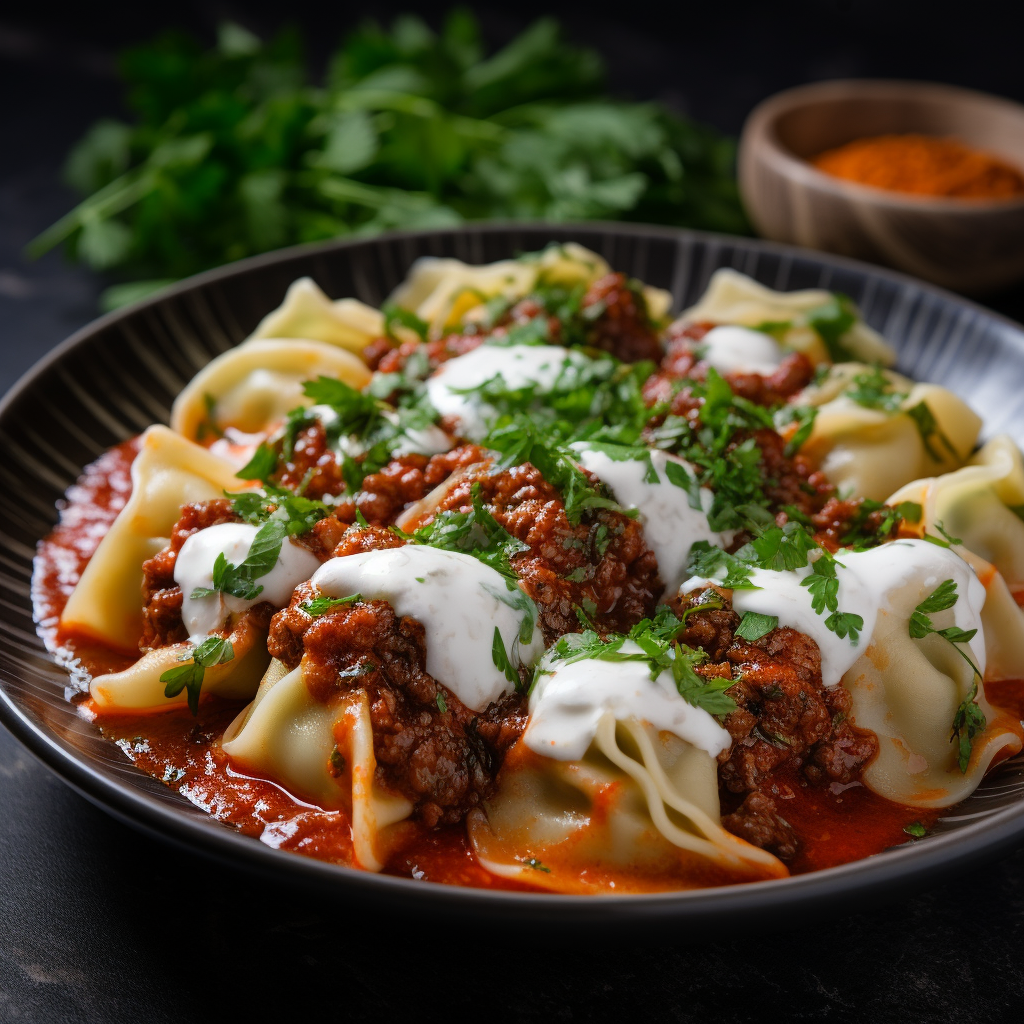
3- Ashak:
Ashak is a type of dumpling filled with leeks, scallions, or spinach. The dumplings are boiled and served with a tomato-based sauce and topped with yogurt and dried mint. The dish is believed to have originated in the northern regions of Afghanistan, where it is still a popular dish. Ashak is often served as an appetizer or as a side dish, and it is a vegetarian alternative to Mantu.
4- Kebabs:
Kebabs are a staple of Afghan cuisine and are made from marinated meat, typically lamb or chicken, grilled over an open flame. The meat is often served on skewers and can be seasoned with a variety of spices, including cumin, coriander, and paprika. Kebabs are often served with naan bread and a side of yogurt. The origin of kebabs is uncertain, but it is believed to have originated in the Middle East and were introduced to Afghanistan by the Mughals.
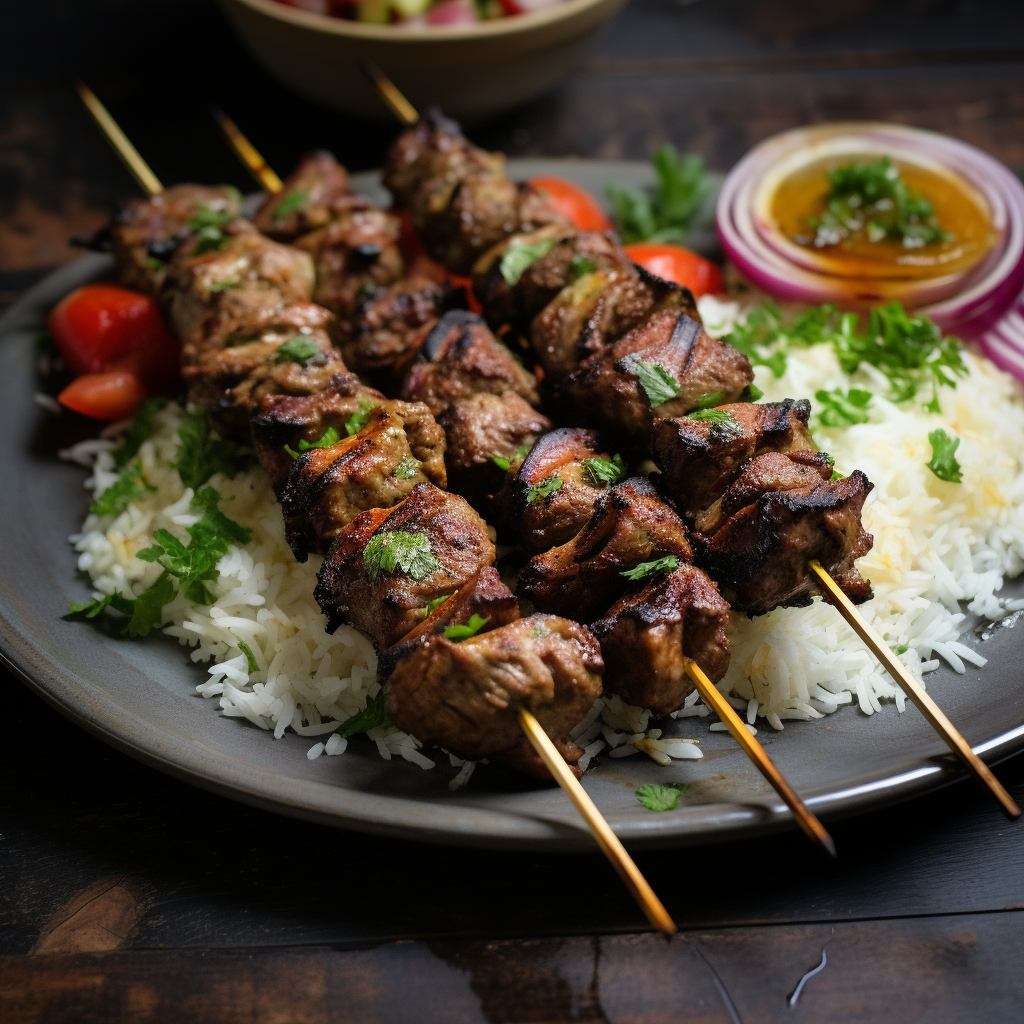

5- Bolani:
Bolani is a stuffed flatbread that is filled with potatoes, onions, and spices. The bread is then fried until crispy and served with a side of chutney. Bolani is believed to have originated in the northern regions of Afghanistan and is a popular street food. The dish is similar to Indian parathas and is often served as an appetizer or as a snack.
6- Qabuli Uzbeki:
Qabuli Uzbeki is a hearty rice dish made with lamb or beef, carrots, raisins, and a blend of spices. The dish is often served during special occasions and celebrations, such as weddings and Eid. The dish is believed to have originated in the northern regions of Afghanistan and was influenced by Uzbek cuisine. Qabuli Uzbeki is similar to Kabuli Palaw, but it has a richer and spicier flavor. Kabuli Pulao is believed to have originated in the Kabul region of Afghanistan during the reign of the Mughal Empire in the 16th century.

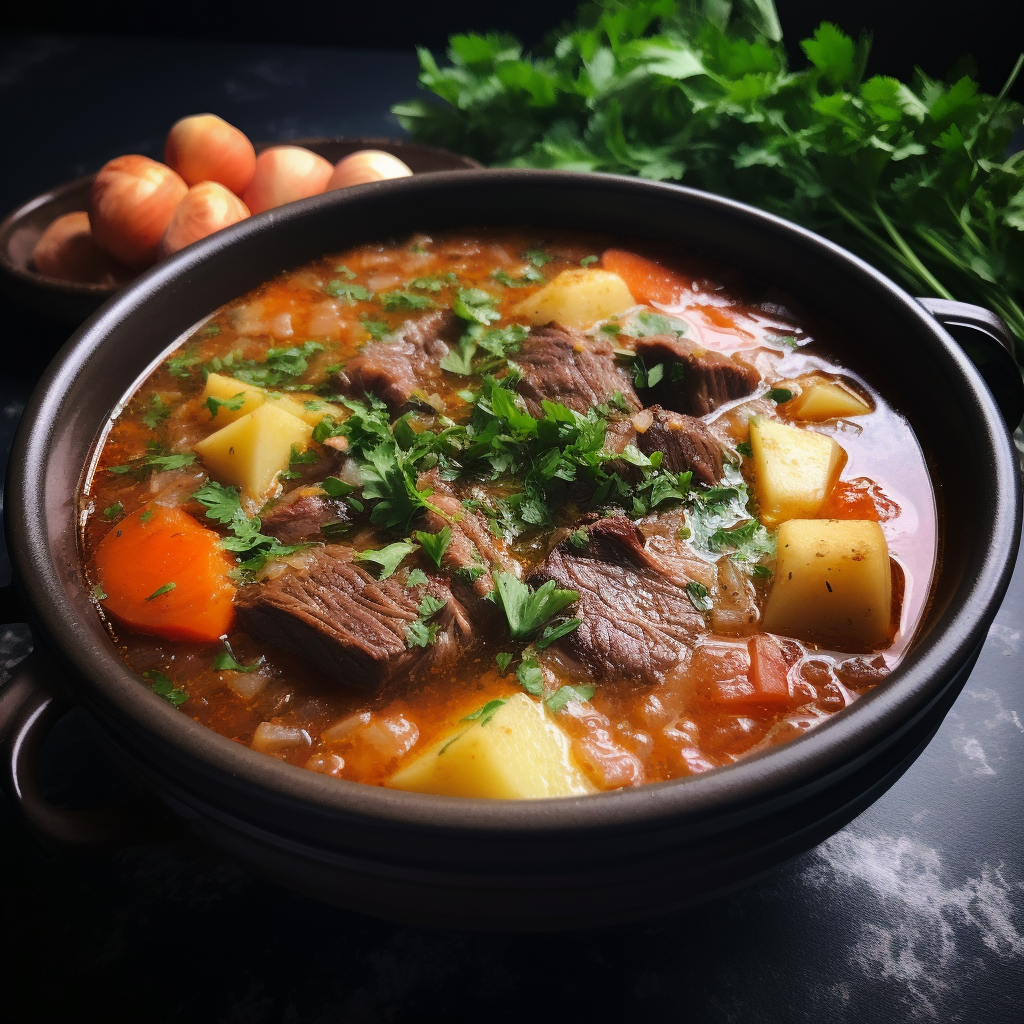
7- Shorwa:
Shorwa is a meat-based soup that is typically made with lamb or beef, onions, garlic, and a variety of vegetables such as carrots, potatoes, and tomatoes. The soup is a staple of Afghan cuisine and is seasoned with a blend of spices including coriander, cumin, and turmeric, and is often served with naan bread. The dish is believed to have originated in Central Asia and was introduced to Afghanistan by the Mongols.
8- Borani Banjan:
Borani Banjan is a vegetarian dish made with eggplant, tomatoes, onions, and a variety of spices. The dish is often topped with yogurt and served with naan bread. The dish is believed to have originated in the northern regions of Afghanistan and is a popular dish among vegetarians.
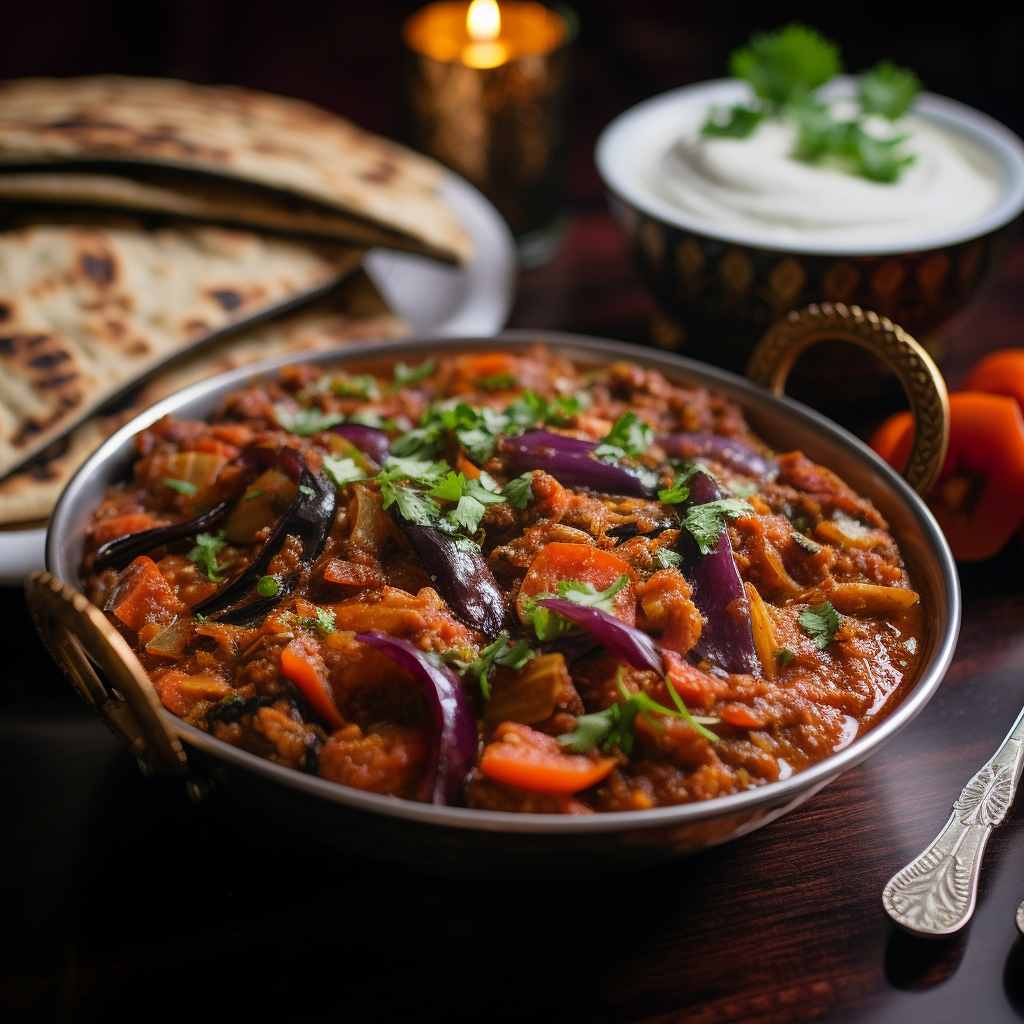
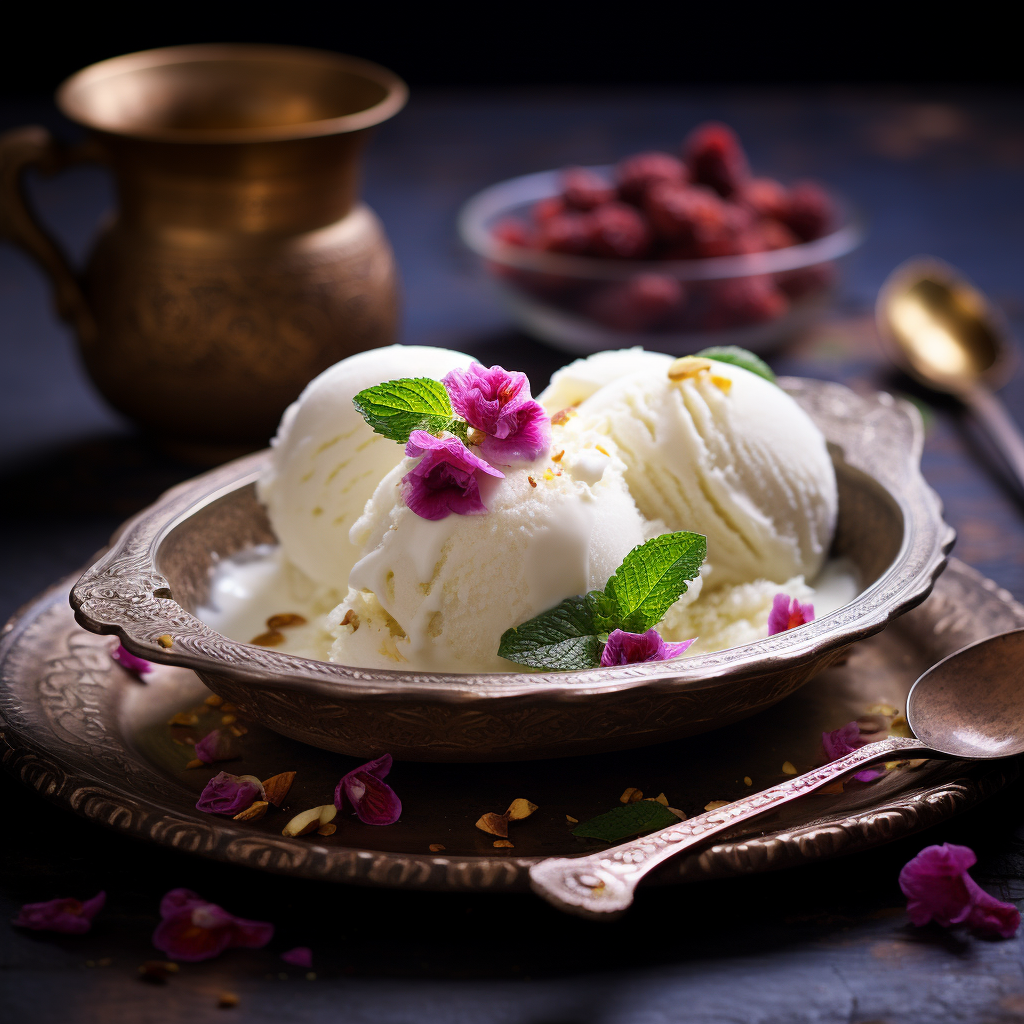
9- Sheer Yakh:
Sheer Yakh is a traditional Afghan ice cream made with milk, sugar, and rose water which are mixed and frozen to create a creamy, refreshing dessert. The ice cream is often served with pistachios and almonds. Sheer Yakh, which translates to “iced milk,” is a traditional Afghan ice cream that has been enjoyed for centuries. The dish is believed to have originated in the central Asian region, and it was brought to Afghanistan by the Mughal emperors. Sheer Yakh is often served during the hot summer months and is a popular treat during festivals and celebrations.
10- Firnee:
Firnee is a popular Afghan dessert made from milk, sugar, cornstarch, and cardamom which are cooked together until the mixture thickens. The dessert is often topped with pistachios and is served chilled. Firnee is a sweet, creamy dessert that has been a favorite in Afghanistan for generations. The dish is believed to have originated in Persia and was brought to Afghanistan during the Mughal Empire. Firnee is a popular dish during festivals and special occasions, and it is often served alongside other traditional Afghan sweets.

Final Thoughts on Food in Afghanistan
Each of these dishes has a unique history that reflects Afghanistan’s cultural heritage. For example, Kabuli Palaw is believed to have originated in Kabul during the reign of the Mughal Empire, while Mantu is thought to have been brought to Afghanistan by the Mongols. Kebabs, on the other hand, are believed to have been introduced to the region by the Persians.
In conclusion, Afghan cuisine is a flavorful and diverse cuisine that reflects the country’s rich cultural history. From Kabuli Palaw to Firnee, each dish is a testament to the culinary heritage of Afghanistan.